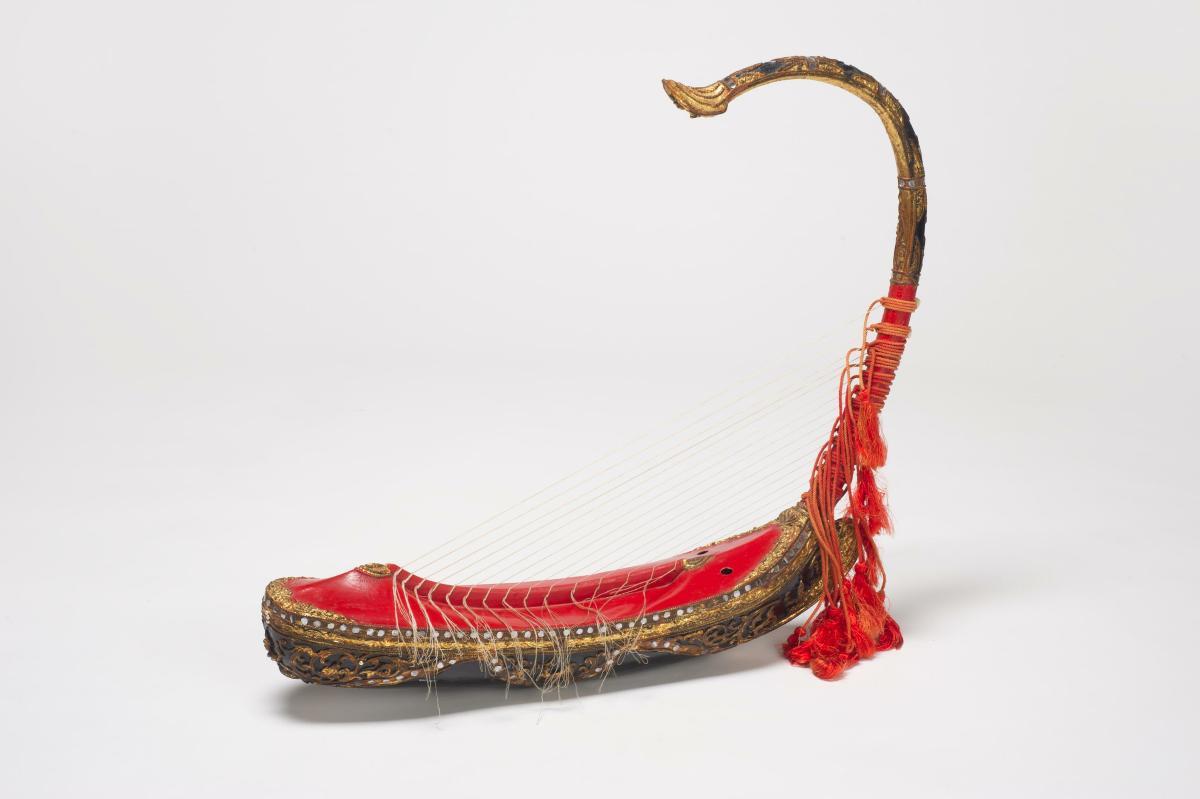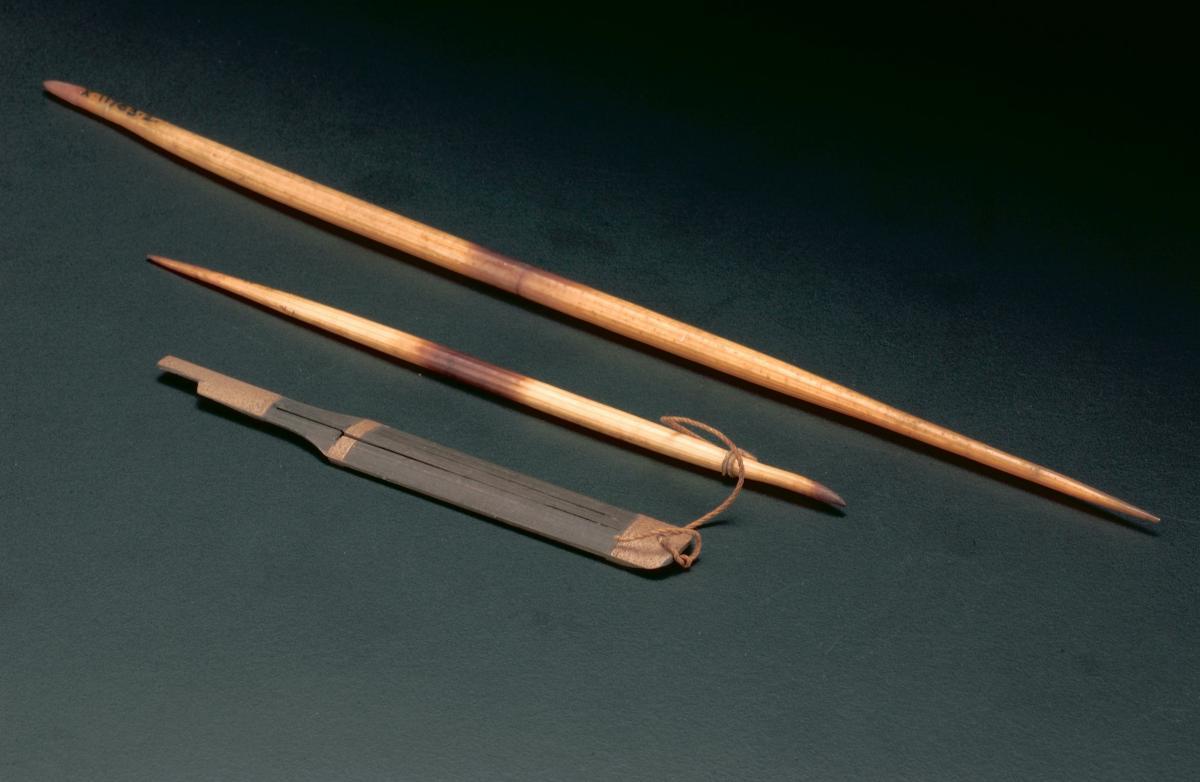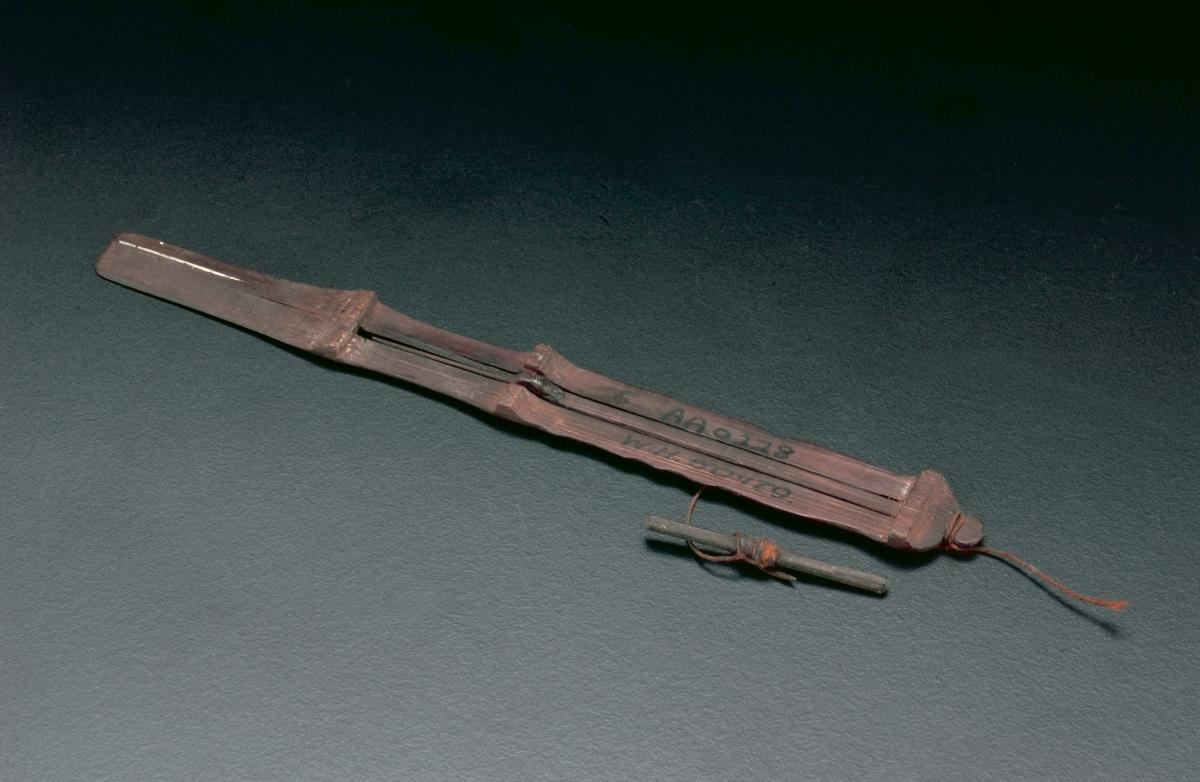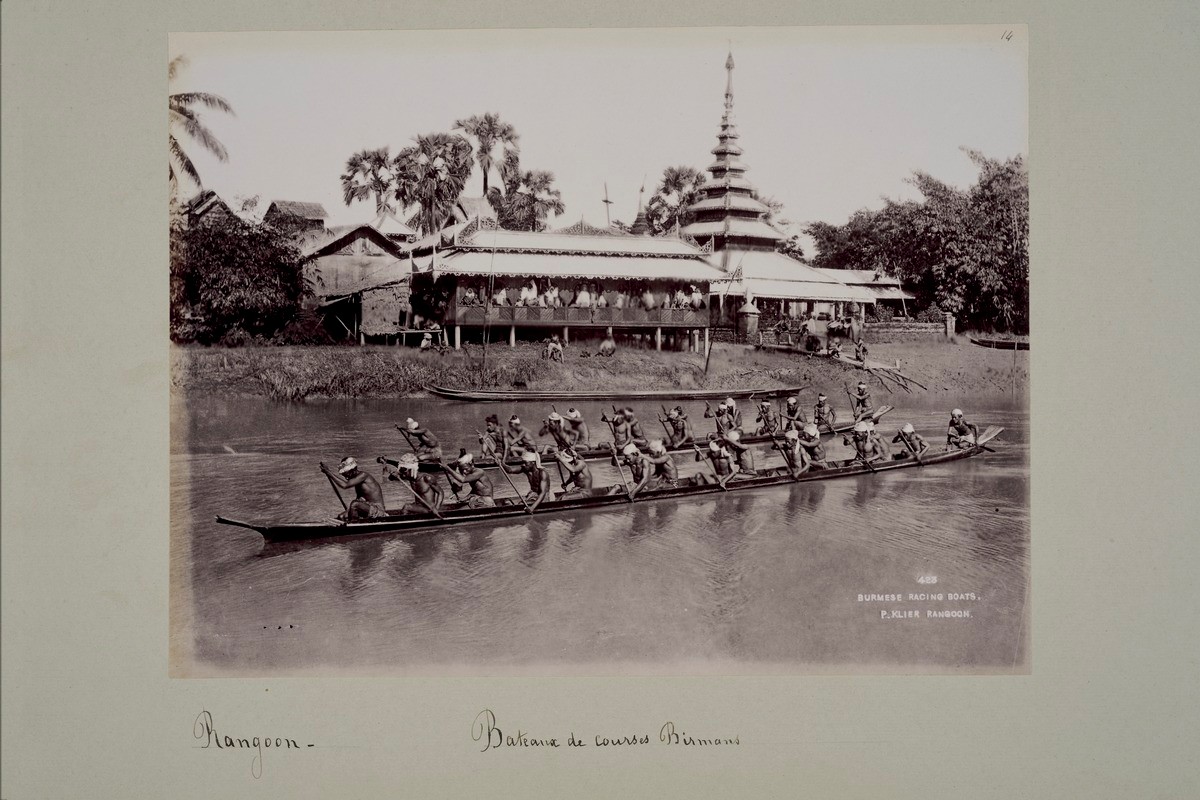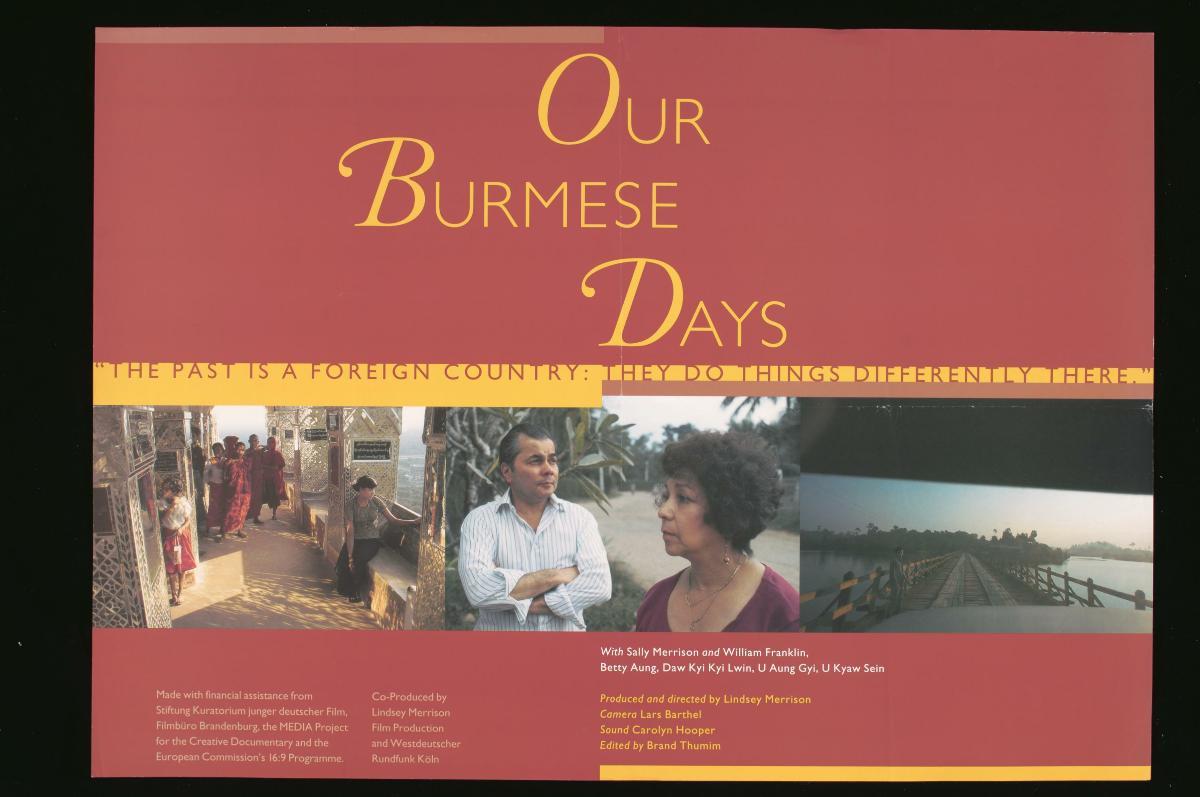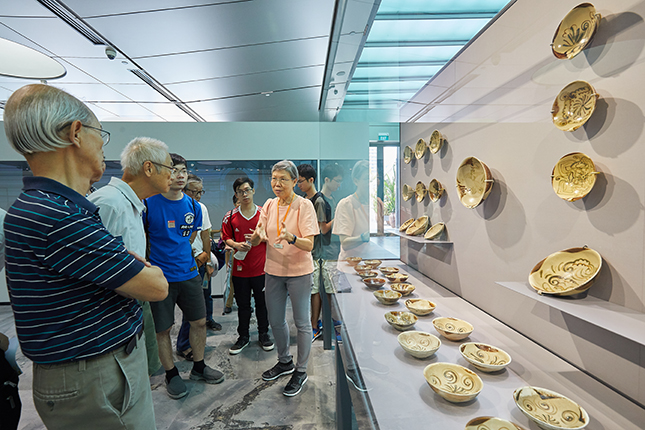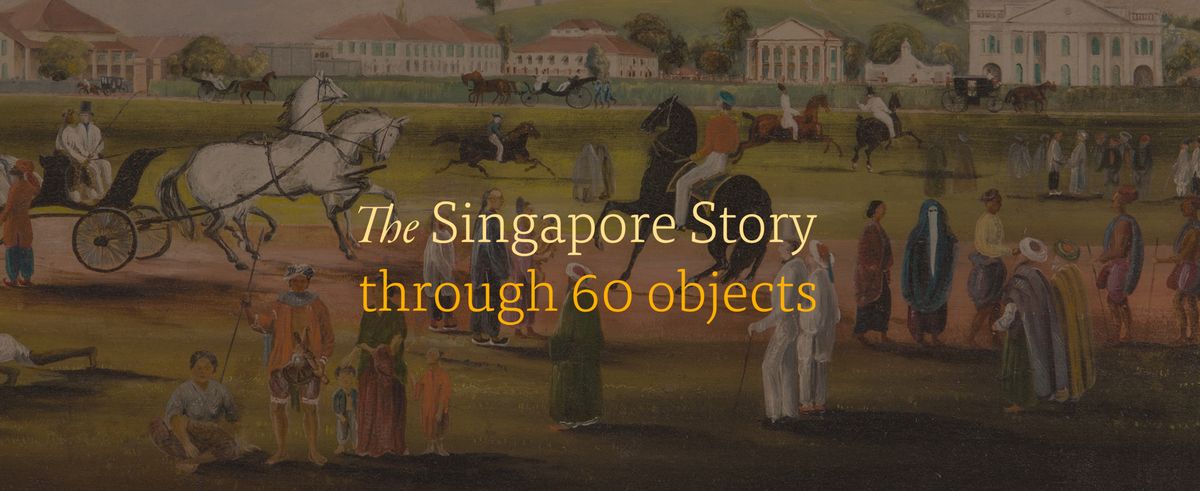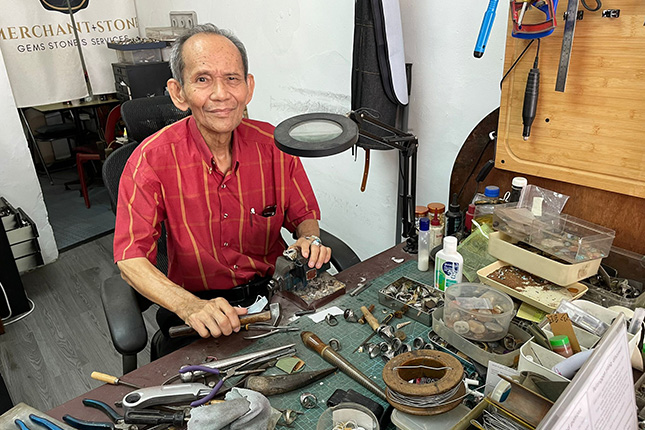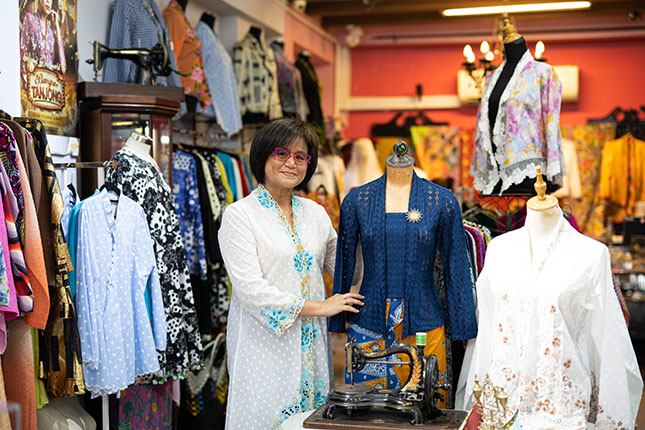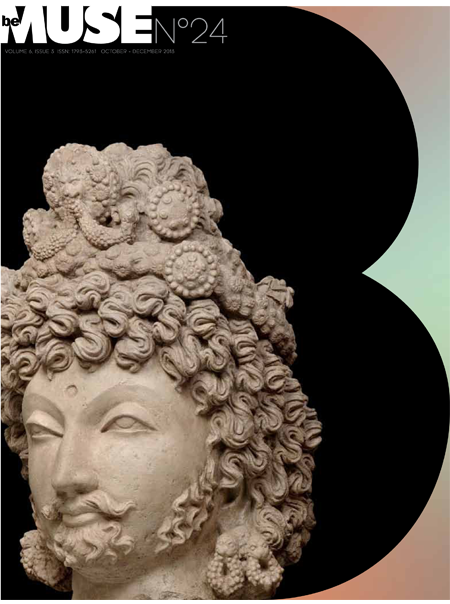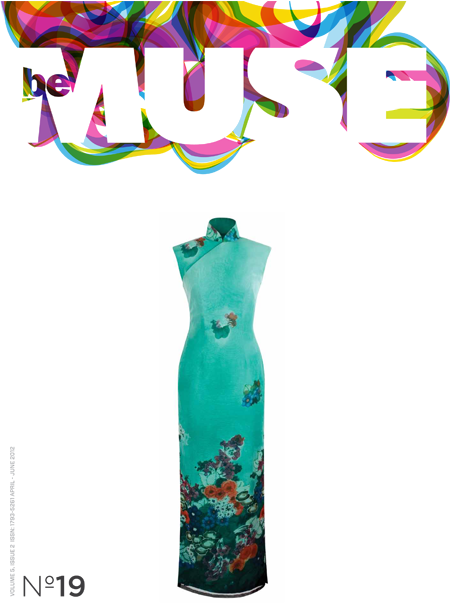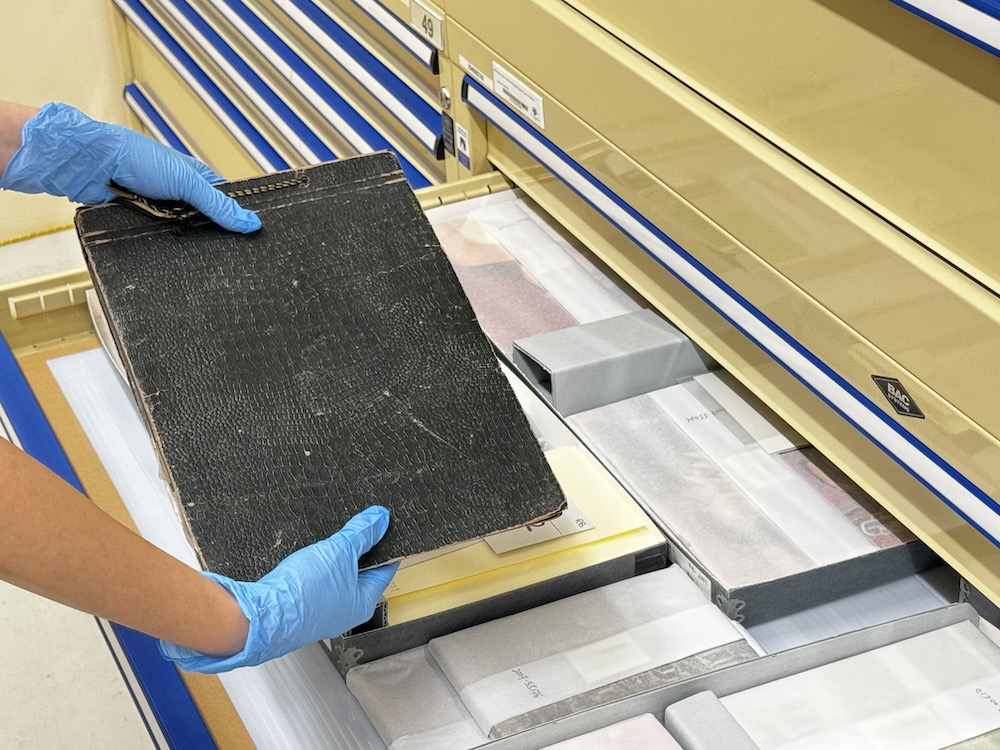This fifteen-stringed harp from Burma is covered in black, gold, and red lacquer. Small pieces of glass inlay adorn the sides of the harp, which is in the shape of a boat. It features a long, curved neck carved from the wood of the sha tree that grows on hills in Burma. The neck terminates in a decorative Bodhi-tree leaf; two similar representations of leaves appear on the body. Red cotton tassels decorate the ends of the strings. The harp is played sitting on the floor with the body in the lap, and the arch on the left. Harps in this shape have a long history in Burma. They may have originated in India; very similar depictions of musical instruments have been found in Bengal. The earliest archaeological evidence in Burma is at the 8th century Bawbawgyi temple of the Sri Ksetra kingdom, 260 km northeast of Rangoon (Yangon). Sculptural decorations at the site show similar harps with five strings in scenes with musicians and dancers. Depictions of harps also appear on stone reliefs from the 11th century Nagayon temple, and the 10th century Ananda temple at Bagan. The harp is thought to have survived continuously since that time, and is mentioned in many important Burmese chronicles and texts. They are now the national instrument of Burma. This example was probably made in the 20th century.




